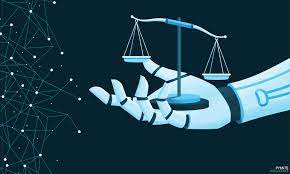Karan Modi, A 2nd-Year, B.K Mercantile Bank Law College Student has written this Article “Separation of Powers in India”
INTRODUCTION
The Indian Constitution is a well-crafted document that provides for the separation of powers in India. It is between the three branches of government: the legislature, the executive, and the judiciary. This separation of power is a fundamental feature of India’s democratic system, ensuring that no single branch becomes too powerful and that each branch can act as a check on the others. The Indian Constitution’s system of checks and balances is crucial to maintaining the rule of law and protecting the rights and freedoms of the Indian people. In this article, we will explore in detail the different branches of government and their respective roles and responsibilities under the Indian Constitution.
ARTICLE 50:-
Article 50 of the Indian Constitution, 1950 says that the State shall take steps to separate the judiciary from the executive in the public services of the State.
The Indian Constitution provides for a separation of powers between the three branches of government: the legislature, the executive, and the judiciary. This separation of power is essential to ensure that no single branch of government becomes too powerful. Moreover, each branch can act as a check on the others.
THREE MAIN BRANCHES OF THE GOVERNMENT
According to the doctrine of separation of power, the functions and power of the government always be kept separate and exercised only by the respective branch.
The Legislative Branch:
The legislature is responsible for making laws. It consists of two houses, (1) the Rajya Sabha (Council of States) and (2) the Lok Sabha (House of the People). The Rajya Sabha is the upper house and represents the states of India, while the Lok Sabha is the lower house and represents the people of India. The legislative branch has the power to make laws, approve budgets, and hold the executive branch accountable for its actions.
The Executive Branch:
This branch is responsible for implementing and enforcing laws. It consists of the President, the Vice President, and the Council of Ministers (headed by the Prime Minister). The President is the head of state, while the Prime Minister is the head of government. The executive branch has the power to make decisions on behalf of the government, implement policies, and manage the country’s day-to-day affairs.
The Judiciary Branch:
The judiciary is responsible for interpreting and enforcing laws. It consists of the Supreme Court, High Courts, and subordinate courts. The judiciary has the power to interpret the Constitution, hear cases related to constitutional matters, and ensure that all branches of government are following the law.
Thus, The Indian Constitution provides a system of checks and balances between these three branches of government. For example, the executive branch cannot make laws without the approval of the legislative branch, while the judiciary can declare laws made by either branch unconstitutional. This system ensures that no single branch becomes too powerful and that each branch can act as a check on the others.
SEPARATION OF POWER IN INDIA
| Legislative Power | Lok Sabha Rajya Sabha State Legislatures |
| Executive Power | President |
| Judicial Functions | Supreme Court High Court Subordinate Courts |
The doctrine of separation of power has been incorporated in the constitution, as the legislative power is vested in Lok Sabha, Rajya Sabha, and various state legislatures, the executive power vest in the president, and the judicial functions are vested in the Supreme Court, High Court, and subordinate Courts.
OVERLAPPING POWERS
The following provisions mentioned in the constitution of India do not separate the power of these branches:
- The President of India may enjoy legislative powers. He can issue the ordinance when the parliament is not in session.
- Aside from legislating, the legislature has judicial powers in cases of breach of privilege, impeachment of the President, and removal of judges.
- The President also exercises judicial functions in disputes relating to the disqualification of a Member of Parliament.
- High Courts have supervisory power to check the work done by the subordinate courts and the tribunals. Also, High Courts can transfer one case from one court to another court. Such functions are not judicial.
- The legislature exercises judicial powers in the case of altering and revalidating legislation ruled ultra vires by the Court.
USE OF SEPARATION OF POWER IN DIFFERENT COUNTRIES:-
- In the United States of America:
The founding father of the American constitution considered the doctrine of separation of power as the heart of their constitution and it seeks to ensure that each organ of the government can exercise only its powers and functions.
- In England:
England has not adopted this doctrine of separation of power. The English system of government is based more on an integration of power than a separation of power.
- In France:
France declared that there would be nothing like a constitution in the country if the doctrine of separation of power was not incorporated there.
MERITS OF THE DOCTRINE OF SEPARATION OF POWER:-
- It ensures that each branch of the government functions independently and without any influence.
- The efficiency of the work in the branches of government increased due to the doctrine of separation of power.
- There is the division of work and hence the division of skills and labor occurs.
- Since the experts will handle the matters of their parts, the degree of correctness increases.
DEMERITS OF THE DOCTRINE OF SEPARATION OF POWER:-
However important and useful the doctrine of separation of power may be in theory, its practical application has often created serious problems.
- This doctrine proposes that three branches of the government are independent, however, it is also impossible to draw thin lines between them.
- There is a possibility of delay in the process because there will be no supervisor over others so actions of branches can become arbitrary.
LANDMARK JUDGMENTS
Indira Nehru Gandhi v. Raj Narain[1]:
It was observed, In the Indian Constitution, there is a separation of powers in a broad sense only. A rigid separation of powers as under the American Constitution or the Australian Constitution does not apply to India.
I.C.Golak Nath v. State of Punjab[2]:
It was held that the Constitution brings into existence different constitutional entities, namely, the Union, the States, and the Union Territories. Moreover, it has created three major instruments of power, namely, the Legislature, the Executive, and the Judiciary. It demarcates their jurisdiction minutely and expects them to exercise their respective powers without overstepping their limits. They should function within the spheres allotted to them.
Kesavananda Bharati v. State of Kerela[3]
It was held that the ordinary legislative powers will be an encroachment on the theory of separation of powers. Nevertheless, Beg, J. added that separation of powers is a part of the basic structure of the Constitution. None of the three separate organs of the Republic can take over the functions assigned to the other. This scheme of the Constitution cannot be changed even by resorting to Article 368 of the Constitution.
CONCLUSION
The separation of powers under the Indian Constitution is an essential feature of India’s democratic system. It ensures that no single branch of government becomes too powerful and that each branch can act as a check on the others. This system of checks and balances is crucial to maintaining the rule of law and protecting the rights and freedoms of the Indian people.
Despite all the criticism of the doctrine of separation of power, one cannot say that this doctrine needs to be abandoned.
REFERENCES
- The Constitution Of India
- https://www.lawctopus.com/
- https://indiankanoon.org/
- https://www.legalserviceindia.com/articles/articles.html
[1] 1975 AIR 1590, 1975 SCC (2) 159
[2] 1967 AIR 1643, 1967 SCR (2) 762
[3](1973) 4 SCC 225, AIR 1973 SC 1461
![]()




Leave feedback about this